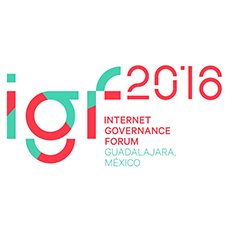Global connect, IEEE, ISOC, ITU, UNESCO, WEF, and the World Bank – Advancing solutions for connectivity: improving global coordination and collaboration
5 Dec 2016 14:00h - 19:00h
Event report
[Read more session reports and live updates from the 11th Internet Governance Forum]
The session aimed to discuss the challenges involved in improving coordination and collaboration among a number of projects and initiatives that work to achieve universal Internet access by 2020. It started with introductory remarks by representatives of the co-organisers: Karen McCabe from the IEEE, Joyce Dogniez from the Internet Society, Doreen Bogdan-Martin from the ITU, Manu Bhardwaj from Global Connect, Cedric Wachholz from UNESCO, Doyle Gallegos from the World Bank, Nigel Hickson from ICANN, and Alex Wong from the WEF. The event was organised as an interactive work-session discussing the challenges of connecting the remaining billions and sharing perspectives on possible solutions.
In the context of advancing solutions for Internet inclusion, the following themes were discussed:
- Improving data for Internet inclusion
- Coordination on basic digital skills training
- Gender and the digital divide
- Infrastructure development and impact investing for connectivity
- Mapping gaps for connect to thrive
- Sustainable development goals impact framework
- E-government services
- Youth and Connectivity
Following a set of presentations, breakout discussions sought to identify solutions and synergies on specific topics.
The group discussing ‘How is youth affected by the lack of connectivity?’ concluded that Internet access –or its lack – has a direct influence on knowledge. In Lebanon, the lack of connectivity is crucial in the case of the refugee crises. At the same time, the younger generation is objecting to social networks which can act as ‘filter bubbles’ in terms of the way they shape our thoughts and expose our privacy without our (consumers’) knowledge.
When it comes to the ‘infrastructure development of connectivity’, there are two broad categories of ‘needs’. The first involves areas which enjoy good access, where increasing demand creates the need for investment and makes the case for businesses to invest in these areas. The second involves areas where people have no access and there is no true demand. These areas need low-cost ways to get connected.
The group discussing ‘data and challenges in getting data’ pointed out that in some cases, obtaining useful data from companies could be beneficial, but there are legal impediments. Tower location tracking and commercial mapping applications presented many opportunities. Civil society is seen as a key element, even though resources are dedicated to working with cases on the ground. The idea of expanding the traction notion of civil society was also suggested.
‘It is more than just giving a woman access to the Internet or a mobile phone. It is the entire ecosystem. We need to make sure girls understand there are opportunities and options for them out there’, was the main conclusion of the group discussing ‘Gender gap’, who also referred to the Equals gender-equality initiative. In addition, the group expressed concern over harassment directed towards women. The group pointed out that women need to be given equal opportunities in order to see change. Mainstream media plays a great role in shaping the perceptions of today, and needs to be involved in a positive way.
by Dr Roxana Radu, Aida Mahmutović, and Mamothokoane Tlali
Related topics
Related event

